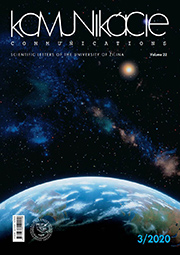Implementation System of Technical Specification for Interoperability for the Rolling Stocks
Implementation System of Technical Specification for Interoperability for the Rolling Stocks
Author(s): Jaromir Siroky, Katarina Magdechova, Petr Nachtigall, Stephan Schroder, Pavlina SirokaSubject(s): Business Economy / Management, Transport / Logistics
Published by: Žilinská univerzita v Žilině
Keywords: Single European Area; interoperability; methodology of authorisation type of vehicles; software model; authorisation type of vehicles; TSI;
Summary/Abstract: In the paper, the present state of scientific knowledge in authorising the types of railway vehicles in Slovakia and abroad is analysed by the authors. The aim of the authorisation of the types of railway vehicles is to take into account the interests of the whole society in the field of transport in the manufacturing of these vehicles or their import from abroad. These interests mainly include a greater security of transport, as well as a greater quality, reliability and lifespan of railway vehicles. The authors also analyse the Commission Recommendation 2014/897/EU of 5 December 2014 on matters related to the placing in service and use of structural subsystems and vehicles under Directives 2008/57/EC and 2004/49/EC of the European Parliament and of the Council, which should contain instructions related to the matters in question. At the same time, it is necessary to take into account Directive (EU) 2016/797 of the European Parliament and of the Council of 11 May 2016 on the interoperability of the rail system within the European Union, and Directive (EU) 2016/798 of the European Parliament and of the Council of 11 May 2016 on the railway safety. In addition to ensuring the applicability of interoperability regulations (new directives, regulations, decisions, recommendations, etc.), the aim of this paper is to present a methodology of authorising the types of railway vehicles and a software model (SW) of authorising the types of railway vehicles, with European legislation as a possible tool to speed up and simplify the entire process. The paper is concluded by three types of authorisation processes for different railway vehicles and their accessories, comparing the length and complexity of processing using the standard authorisation process and using the SW tool proposed.
Journal: Komunikácie - vedecké listy Žilinskej univerzity v Žiline
- Issue Year: 22/2020
- Issue No: 3
- Page Range: 59-67
- Page Count: 9
- Language: English

